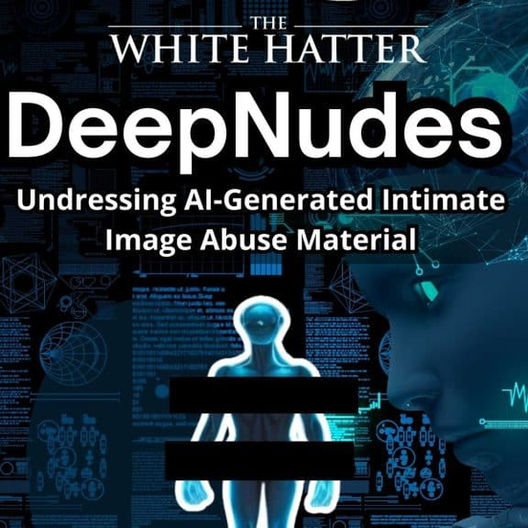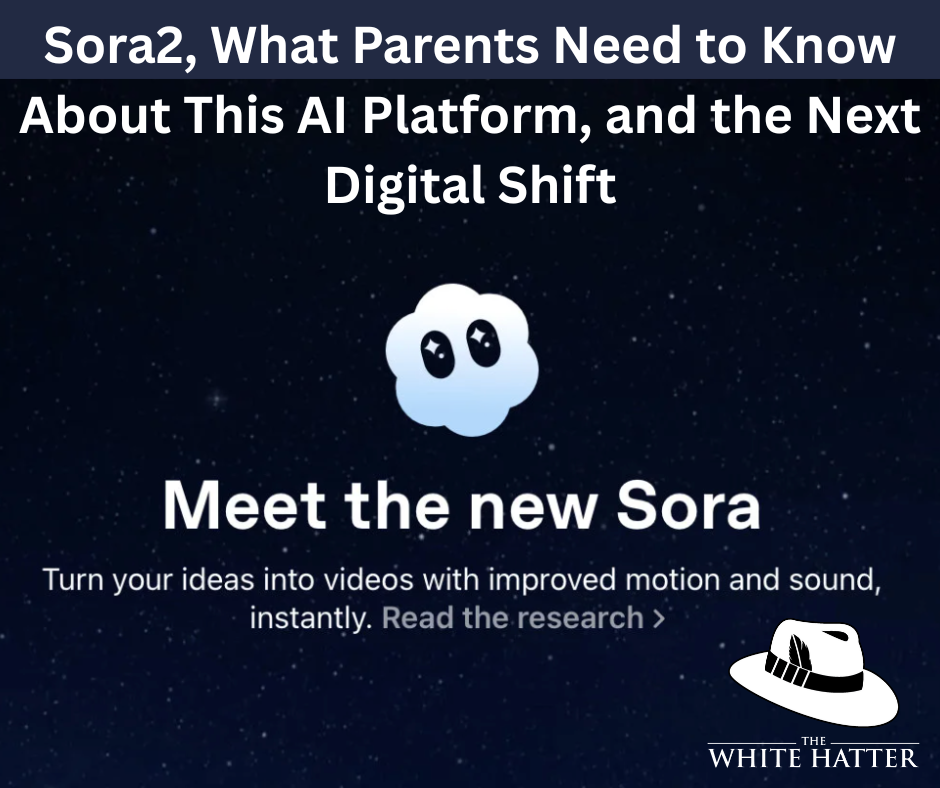OpenAi’s Sora 2: What Parents Need to Know About this AI Platform and the Next Digital Shift
- The White Hatter

- 7 hours ago
- 5 min read

Caveat - Even knowing about the information in this article, we downloaded and have been using Sora2. Why? because if we are going to talk about it with parents, caregivers, educators, youth and teens, we should also know how it works first hand.
If you’ve heard the name Sora 2, you might know it as OpenAI’s newest hyper-realistic video generator that has been one of the most popular downloads in the App store over the past couple of weeks. It allows users to create short, lifelike clips, up to ten seconds long, using either their own likeness or someone else’s. Recently, we asked a group of about 400 grade 10-12 students how many of them have downloaded and played with Sora 2, and about 1/3 of their hands went up.
To the casual eye, Sora 2 feels a lot like TikTok that is quick, creative, and engaging. However, behind the fun, there’s a deeper story every parent and caregiver should understand.
Like many “free” apps, Sora 2 isn’t truly free. The product isn’t just the video you make, it’s you. Every time someone uses the app, every prompt typed, every clip adjusted, every post shared or deleted, feeds the AI machine. AI futurist Sinead Bovell put it bluntly:
“Every video prompt, every video tweak, every video that gets shared or discarded, what goes viral, what doesn’t, is training their video generation model. That’s all free labor that would cost millions to replicate in a controlled environment with paid testers… They have gamified reinforcement learning at scale. We are training OpenAI’s simulation and robotics models. We are the product.” (1)
Bovell’s warning gets to the heart of what makes Sora 2 different from earlier “fun” apps. This isn’t just about entertainment. It’s about building the foundation for what OpenAI’s CEO Sam Altman calls, “the operating system for the physical world.”
When Altman says OpenAI is building the operating system for the physical world, he’s talking about more than just digital content creation. He’s describing a future where AI systems like Sora 2 become the brainpower behind machines that see, move, and decide. Just as Windows or iOS manage how computers and phones work, this new kind of operating system could power everything from autonomous vehicles to home robots and surveillance systems.
That is where the concern about biometrics, your face, voice, movements, and even gestures, comes in. When you upload a likeness, even for a 10 second video, you’re contributing data that can help an AI learn how humans look and move. The more realistic your clip, the better the model becomes at recreating human behaviour. Over time, this data doesn’t just teach the system how to generate fake videos, it teaches it how to simulate reality.
Just as TikTok mastered the art of engagement, Sora 2 uses entertainment as its lure. The platform feels playful and creative, which encourages users to spend time experimenting. But every second of that experimentation produces data that has immense value for OpenAI.
Sora 2’s design shows how AI companies are learning from social media’s playbook:
Make it short and fun. Short clips reduce hesitation and increase participation.
Make it social. Viral content brings in more users, which brings in more data.
Make it feel safe. A polished interface builds trust, even when the privacy trade-offs aren’t obvious.
It’s not that Sora 2 is doing something illegal; it’s doing something strategic. It’s turning mass participation into a training engine for their AI systems that will move beyond screens into physical environments.
For parents and caregivers, Sora 2 raises some important questions that go far beyond novelty or entertainment. The first is whether young people truly understand what they’re giving away when they “play” with AI-driven tools like this. Apps such as Sora 2 make the creative process look harmless, just a fun way to make a short, lifelike video, but behind the scenes, every upload, prompt, and adjustment helps train an artificial intelligence system. Youth may not realize that by using their image, voice, or movements, they’re contributing to a massive dataset that can be used to build and refine future AI models.
Another concern is what protections, or lack thereof, are in place once a company can generate a child’s face or voice on command. Once this data is uploaded, it’s nearly impossible to retrieve or delete completely. Even if privacy policies promise not to misuse it, parents and caregivers have little control over how that data might later be repurposed, shared, or analyzed. This raises real questions about biometric ownership, who truly “owns” a digital version of your child once it’s created?
We believe that parents and caregivers should consider how technologies like Sora 2 are shaping the way future machines “see” and “judge” human behaviour. The data collected today teaches AI how people look, move, and express emotion. That knowledge will help train not just video generators, but also future robotics and surveillance systems that interpret human actions. The more realistic these systems become, the greater their influence over how society, and machines, define what’s normal, trustworthy, or valuable in human interaction.
Youth and teens, in particular, may be drawn to the novelty of creating hyper-realistic versions of themselves or their friends without realizing the long-term implications. What starts as a creative experiment can contribute to a growing dataset of human likenesses used to train generative AI, and possibly future robotics, without any compensation or control.
So what can parents, caregivers, and educators do?
Start with digital literacy. Talk to your child about how “free” tools often exchange personal data for access.
Discuss biometric privacy. Explain that their face, voice, and movements are unique identifiers, just like a fingerprint, and once uploaded, they can’t be taken back.
Encourage consent culture. Teens shouldn’t use other’s likenesses without permission, even in AI-generated clips.
Model caution. If you try apps like Sora 2, use generic prompts or stock avatars instead of personal photos.
Stay curious, not fearful. AI innovation isn’t inherently bad, but it’s important to understand how data is collected and why.
OpenAI’s evolution from ChatGPT to Sora 2 represents a major leap, from text based intelligence to visual and physical simulation. While this progress is impressive, it also blurs the line between human and machine behaviour. For families, that means conversations about privacy, ethics, and consent need to happen earlier and more often.
We have said it for years, nothing is truly free in the digital world. When we don’t pay in money, we often pay in data. Sora 2 may be the most striking example yet of how entertainment, innovation, and data extraction now live side by side.
So before you or your child upload your face to make a ten-second AI video, pause and ask, “Who really benefits from this clip, us, or the AI machine we’re helping to train?”
Digital Food For Thought
The White Hatter
Facts Not Fear, Facts Not Emotions, Enlighten Not Frighten, Know Tech Not No Tech
References:














